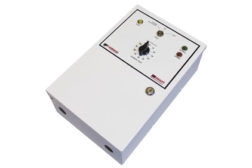Commercial Controls
Energy Can Be the Single Largest Operating Expense in a Typical Commercial Building
Read More
March 23, 2015: Building Automation Cumulative Revenue to Top $713 Billion from 2015-2023
Deeper Integration of Building Automation Systems Is Driving Adoption in Commercial Buildings
March 23, 2015
March 20, 2015: IBM and Carnegie Mellon Launch Partnership for Smarter Buildings
University Expects to Save Approximately 10 Percent on Utilities
March 20, 2015
March 19, 2015: Virginia Tech to Continue Development of New Building Automation Solution
Project Is Aimed at Small and Medium-Sized Commercial Buildings
March 19, 2015
Johnson Controls, UW Partner for Better Controls
Project Serves as Foundation for Advancing HVAC Control Systems in General
March 16, 2015
March 5, 2015: New Low-Cost Wireless Sensors Yield Better HVAC Energy Efficiency
Advanced Sensors and Controls Have Potential to Reduce Energy Consumption of Buildings by 20-30 Percent
March 5, 2015
March 2, 2015: InsideIQ Building Automation Alliance to Hire Executive Director
Leadership Position Seen as Next Phase of the Alliance’s Growth
March 2, 2015
Feb. 26, 2015: Johnson Controls, University of Wisconsin to Reduce Commercial HVAC Costs
The Project Is Being Tested at Various Sites
February 26, 2015
Copyright ©2024. All Rights Reserved BNP Media.
Design, CMS, Hosting & Web Development :: ePublishing



